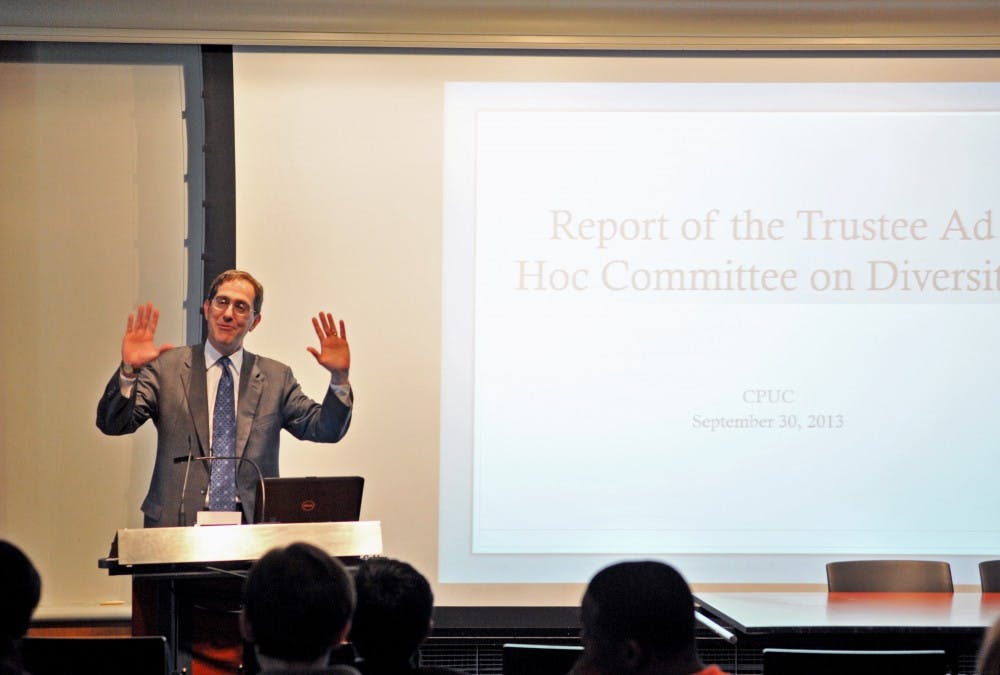University President Christopher Eisgruber ’83 floated the idea of a potential increase in the size of the University’s student body at theCouncil of the Princeton University Community’s meeting on Monday afternoon. The committee alsoreviewed the recently released Report of the Trustee Ad Hoc Committee on Diversity in a meeting in Betts Auditorium on Monday afternoon.
After opening the meeting with an explanation of the recurring themes he had heard from members of the Princeton community over the course of a 'listening tour' over the first months of his presidency, Eisgruber raised the question of increasing the size of the University, asking CPUC members their thoughts on such a hypothetical expansion. Members expressed their concern over housing resources, the student-to-faculty ratio and the general preservation of the current Princeton experience in the face of any potential increase in the student body.
When one CPUC member brought up potential overseas expansion, Eisgruber said that he didn’t see such drastic growth in the University’s future. He did say, however, that local expansion is a question that should be on the community’s agenda in the near future.
Following Eisgruber’s presentation, Deborah Prentice, co-chair of the Trustee Ad Hoc Committee on Diversity and a professor of psychology and public affairs, gave a presentation on her committee’s findings.
The committee’s report, published Sept. 12, explored the race and gender breakdowns for University faculty, staff and graduate students. The report showed that the University remains predominantly white when it comes to the racial breakdown of staff and faculty. The report also illustrated gender imbalances, with males outnumbering females in every University population besides senior staff.
Prentice acknowledged these results, explaining that although Princeton’s populations are becoming less homogeneous, such diversification is happening too slowly and on too small a scale. She pointed, for example, to the number of black and Hispanic staff, faculty and senior staff employed at Princeton, which has shown a very small increase over a 30-year period.
Despite these problems, Prentice said that she and the committee believe that real, institution-wide change with regard to diversity can be achieved in the future. The molecular biology program, she said, had raised diversity among its graduate students from 3 percent of underrepresented minorities to 23 percent over the course of just seven years. Echoing the report, Prentice said the practices established by the molecular biology department that led to the increase should be a model for other departments.
Prentice also said that departments like molecular biology would have to be the ones to lead the effort to increase diversity. She explained that while she knows this is a daunting burden to place on individual departments, the University administration will help provide resources and assistance along the way.

When asked what ideal diversity among faculty, staff and graduate students would look like at Princeton, Prentice pointed to the undergraduate population as an example.
“I’d like [undergraduates] to be able to see themselves in the senior ranks … Very broadly, I’d like to see some kind of mirroring of diversity at all levels,” Prentice said.
After the conclusion of Prentice’s remarks, Eisgruber concluded the meeting with a few words about the committee’s report and diversity in general.
“The committee’s work is now done, but our work as a community is now beginning,” Eisgruber concluded. “We should end with a ‘To Be Continued’… because this conversation is one that we will have to continue in the years ahead.”









